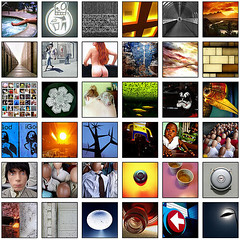Stereoscopic for Dummies
Stereoscopic for Dummies
Confused about the technicalities of this hot Hollywood trend? Just how do they create those “wonderful movies where stuff comes out of the screen at you”? Like a pack of dummies, we sit in the theatre grasping at thin air, attempting to brush aside the foliage of Pandora’s lush rainforests, or perhaps in the hope that Alice, trapped in her nightmarish wonderland, might somehow be rescued back into reality by our loving touch. Then again maybe that’s just me? If you are at all curious as to how the magic of stereoscopic 3D works, yet hesitant to approach the subject for fear of finding yourself caught in a maelstrom of indecipherable geek speak, allow me then the privilege of explaining this curiosity using the simplest terms available to man:
The Difference in Having Two Eyes
Ever wondered how your life might be different if you only had the use
of one eye? Try focusing on a single object for a moment; say something small like a pen. First position your nose directly in front of the object so that it is centered in your field of view. Now, close one eye and remain focused on the object. Next, pretend like you are taking a photograph with your eye; a quick blink to represent a shutter accompanied by the appropriate sound effect should do the trick. Now retain the image/photo you’ve captured in your mind, then close that eye and open the other. Notice the difference between what you’re seeing?
The Wonders of Binocular Vision
Each eye is capturing a slightly different image from a slightly different angle. Put these two images together and what you end up with is what is called binocular vision. Seeing with two eyes provides us with the benefit of not only possessing a wider field of view, it also enables us
to more accurately perceive depth.
Depth Perception
When we stare off into a horizon, there are a number of ways in which we are able to determine the amount of depth between each object included in our range of sight. If for example, you were trying to determine the distance between Aunt Milders House, the large oak in her back yard and the snow capped mountains off in the distance, there would be a number of visual cues to assist you in making an accurate judgment.
Visual Cues for Percieving Depth
Vertical position for example enables you to determine the distance between two objects based on their relative height to one another within your field of view; Basically, the higher the object, the further away it is. Another useful cue is that of atmospheric haze. Objects that are further off in the distance tend to hold less visual clarity than objects
that are closer, both due to the strength of your eyesight, as well as the interference of atmospheric conditions between the object and your point of view. There are several other cues for us to go by when determining depth, but without a doubt the human eyes greatest asset is in having an identical twin. With two eyes, the mind is able to cross reference the visual information it is receiving and produce a hightened perception of depth.
The Replication of Human sight
It is our natural, binocular vision that stereoscopic 3d takes advantage of to create its illusion of depth in what is truthfully a flat, two dimensional image. You see, when the pictures you are seeing on the screen where originally filmed,the filmmakers captured each scene using two separate cameras, positioned at exactly the right angle and distance, so as to replicate the effect of human
binocular sight.
The Purpose of 3D Glasses
Next time you are at the theatre watching a 3D film, try taking off your glasses for a moment and analysing what you see. What might appear to be a blurry mess is actually two slightly different images overlayed on top of each other. 3D Glasses are designed specifically so that each of your eyes is only able to view one of the two images it is presented with on the screen. Our mind then puts the images together and fills in the gaps, and as a result this allows us to gather more visual information as to the three dimensional depth of the scene we are observing.
The Great Illusion of Stereoscopic 3D
Our minds are essentially being tricked into believing that the objects we see on the screen have actual, physical space between them, because our eyes are cross referencing visual information from two separate
images that are telling us this is the perceived truth.
Like Magic
It’s all an illusion, a fascinating lie that can also serve as a timely reminder that we can’t always trust in what our eyes see. And like grand magicians, filmmakers relish in the wonder they can instill in an audience as they capture hearts and minds, drawing people deeper into a world where anything is possible.
If you are interested in learning more about the wonders of filmmaking and visual effects, Lifeway College runs a highly acclaimed Diploma in 3D animation. This course features involvement from industry experts, and has even hosted guest lecturers who have worked for the likes of Disney, Weta digital and Dreamworks. To learn more about this exciting course visit http://www.lifeway.ac.nz/3d-animation
Article from articlesbase.com

